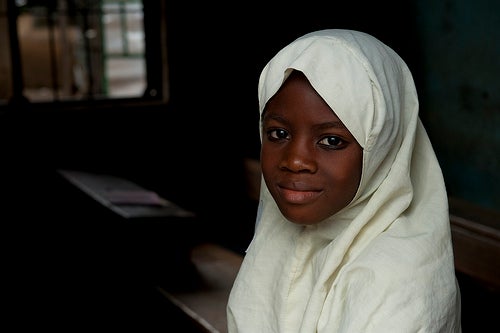
In the Nigerian state of Ekiti, my World Bank colleagues and I recently visited schools that had twice as many teachers as needed. In Bauchi, we saw rural schools that had only language teachers rather than those versed in science or mathematics. In Anambra, there was no single science or mathematics teacher in the rural schools we visited.
Why were these things happening? How can such issues exist within a vast and wonderful country that should have the potential of providing knowledge and expertise throughout the continent and the world? The Systems Approach to Better Education Results (SABER) initiative provided tools and analysis to help identify some ways forward.
SABER maps out the education policy framework in a country, compares it to global best practice, and on this basis helps zero in on the principal systemic challenges. SABER’s main principle is that more education results can be attained when the strengths and weaknesses of the systems are identified and addressed.
Focusing on systems in Nigeria is certainly appropriate, considering that the management of education is a complicated affair. It is simultaneously centralized and highly decentralized. Basic education is the responsibility of local governments; secondary education of state governments; and higher education of the federal government. However, there are also a myriad of federal agencies (some overseen by the Education Ministry, others not) that finance and support basic education -- paying for salaries, other recurrent expenditures, and investments. Some have representatives at the state and local government level making the distribution of responsibilities even more difficult to sort out.
It is not easy to understand the flow of information, resources and decisions considering this complex distribution of responsibilities. Funding flows provide further obstacles to improving learning outcomes. Many of Nigeria’s states do not access intervention funds at the federal level, for example.
Results have fallen short. Seven million of Nigeria’s children remain out of school; net enrollment rates remain low at approximately 60% at the primary level and 26% at the secondary level; and the female disparity index is only 83.6. Additionally, Nigeria scored lowest on a survey of student achievement conducted in 220 sub-Saharan countries.
The World Bank team used SABER as a principal tool to design of a $150 million State Education Program Investment Project for Nigeria (SEPIP), which has addressed some of the complexity of the education system, with the overall objective of increasing learning for all. The application of the SABER tools in Nigeria was supported by DFID‘s Partnership for Education Development.
The project focuses on governance issues in three Nigerian states – Ekiti, Bauchi and Anambra. Based on the SABER analysis, four policy bottlenecks should be addressed if these states are to achieve learning for all:
- Teacher skills are not matched with student needs because of the absence of incentives for teachers to work at hard-to-staff schools or to teach subjects where there are critical shortages;
- Standardized information on student learning and achievement levels is lacking;
- The role of communities and school-based management committees in keeping schools accountable for results is weak; and
- Data is not made available in a timely and user-friendly manner to inform decisions made from the school level to the state level.
The real beauty of SABER is that it proved to be useful for conducting structured and effective policy dialogue with Nigerian decision makers at the local, state and federal levels of the education system. This, in turn, helped identify the four policy domains listed above. The most important contribution, however, was that the SABER exercise created a space for in-depth and frank discussions of the strengths and weaknesses of federal and state education policies. Using SABER as a framework, state officials could compare and contrast their policies across the states selected for SEPIP.
SABER does not dictate which policies should be changed and which should stay put. Rather, it provides an objective analysis of the policy landscape, benchmarking it against international experience. Just because there is some “distance” between what is in place and what is considered best practice does not mean that the right policy changes have been identified for the country in question.
Contextual issues determine which policy changes are most relevant and feasible. For example, the School Autonomy and Accountability SABER application found that no Nigerian school was responsible for the recruitment and management of teachers, something that is considered best practice. However, the state teams indicated that changing this would not make sense in the Nigerian context and would not add value. Also, the feasibility of such a radical change was quite low, in their opinion.
SEPIP and SABER will not solve the education challenges in Nigeria or for three selected states. However, taking an approach where governance and management issues are put front and center in discussions on development may help break through cycles of frustratingly low results and unlock the potential of education to ensure learning for all.
Follow the World Bank education team at Twitter @WBG_Education
Related:


Join the Conversation